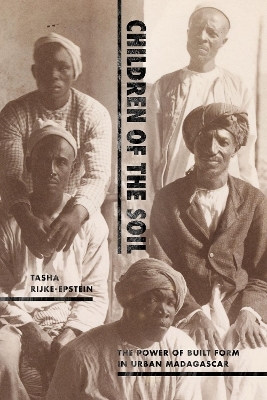
Children of the Soil
The Power of Built Form in Urban Madagascar
Seiten
2023
Duke University Press (Verlag)
978-1-4780-2529-0 (ISBN)
Duke University Press (Verlag)
978-1-4780-2529-0 (ISBN)
Tasha Rijke-Epstein offers an urban history of the Indian Ocean port city of Mahajanga, Madagascar, showing how the built environment was central to how its residents negotiated imperial encroachment, colonial rule, and global racial capitalism over two centuries.
In Children of the Soil, Tasha Rijke-Epstein offers an urban history of the port city of Mahajanga, Madagascar, before, during, and after colonization. Drawing on archival and ethnographic evidence, she weaves together the lives and afterlives of built spaces to show how city residents negotiated imperial encroachment, colonial rule, and global racial capitalism over two centuries. From Mahajanga’s hilltop palace to the alluvial depths of its cesspools, the city’s spaces were domains for ideological debates between rulers and subjects, French colonizers and indigenous Malagasy peoples, and Comorian migrants and Indian traders. In these spaces, Mahajanga’s residents expressed competing moral theories about power over people and the land. The built world was also where varying populations reckoned with human, ancestral, and ecological pasts and laid present and future claims to urban belonging. Migrants from nearby Comoros harnessed built forms as anticipatory devices through which they sought to build their presence into the landscape and transform themselves from outsiders into "children of the soil" (zanatany). In tracing the centrality of Mahajanga’s architecture to everyday life, Rijke-Epstein offers new ways to understand the relationships between the material world, the more-than-human realm, and the making of urban life.
In Children of the Soil, Tasha Rijke-Epstein offers an urban history of the port city of Mahajanga, Madagascar, before, during, and after colonization. Drawing on archival and ethnographic evidence, she weaves together the lives and afterlives of built spaces to show how city residents negotiated imperial encroachment, colonial rule, and global racial capitalism over two centuries. From Mahajanga’s hilltop palace to the alluvial depths of its cesspools, the city’s spaces were domains for ideological debates between rulers and subjects, French colonizers and indigenous Malagasy peoples, and Comorian migrants and Indian traders. In these spaces, Mahajanga’s residents expressed competing moral theories about power over people and the land. The built world was also where varying populations reckoned with human, ancestral, and ecological pasts and laid present and future claims to urban belonging. Migrants from nearby Comoros harnessed built forms as anticipatory devices through which they sought to build their presence into the landscape and transform themselves from outsiders into "children of the soil" (zanatany). In tracing the centrality of Mahajanga’s architecture to everyday life, Rijke-Epstein offers new ways to understand the relationships between the material world, the more-than-human realm, and the making of urban life.
Tasha Rijke-Epstein is Assistant Professor of History at Vanderbilt University.
Note on Toponyms ix
Acknowledgments xi
Introduction: Material Histories 1
I. Building Power
1. Casting the Land: Architectural Tactics and the Politics of Durability 27
2. Vibrant Matters: The Rova and More-Than-Human Forces 54
II. Anticipatory Landscapes
3. Storied Refusals: Labor and Laden Absences 87
4. Sedimentary Bonds: Treasured Mosques and Everyday Expertise 123
III. Residual Lives and Afterlives
5. Garnered Presences: Constructing and Belonging in the Zanatany City 161
6. Violent Remnants: Infrastructures of Possibility and Peril 195
Epilogue: Unfinished Histories 225
Notes 241
Bibliography 293
Index 339
| Erscheinungsdatum | 16.09.2023 |
|---|---|
| Zusatzinfo | 73 illustrations |
| Verlagsort | North Carolina |
| Sprache | englisch |
| Maße | 152 x 229 mm |
| Gewicht | 544 g |
| Themenwelt | Geisteswissenschaften ► Geschichte ► Regional- / Ländergeschichte |
| Technik ► Architektur | |
| ISBN-10 | 1-4780-2529-8 / 1478025298 |
| ISBN-13 | 978-1-4780-2529-0 / 9781478025290 |
| Zustand | Neuware |
| Informationen gemäß Produktsicherheitsverordnung (GPSR) | |
| Haben Sie eine Frage zum Produkt? |
Mehr entdecken
aus dem Bereich
aus dem Bereich


